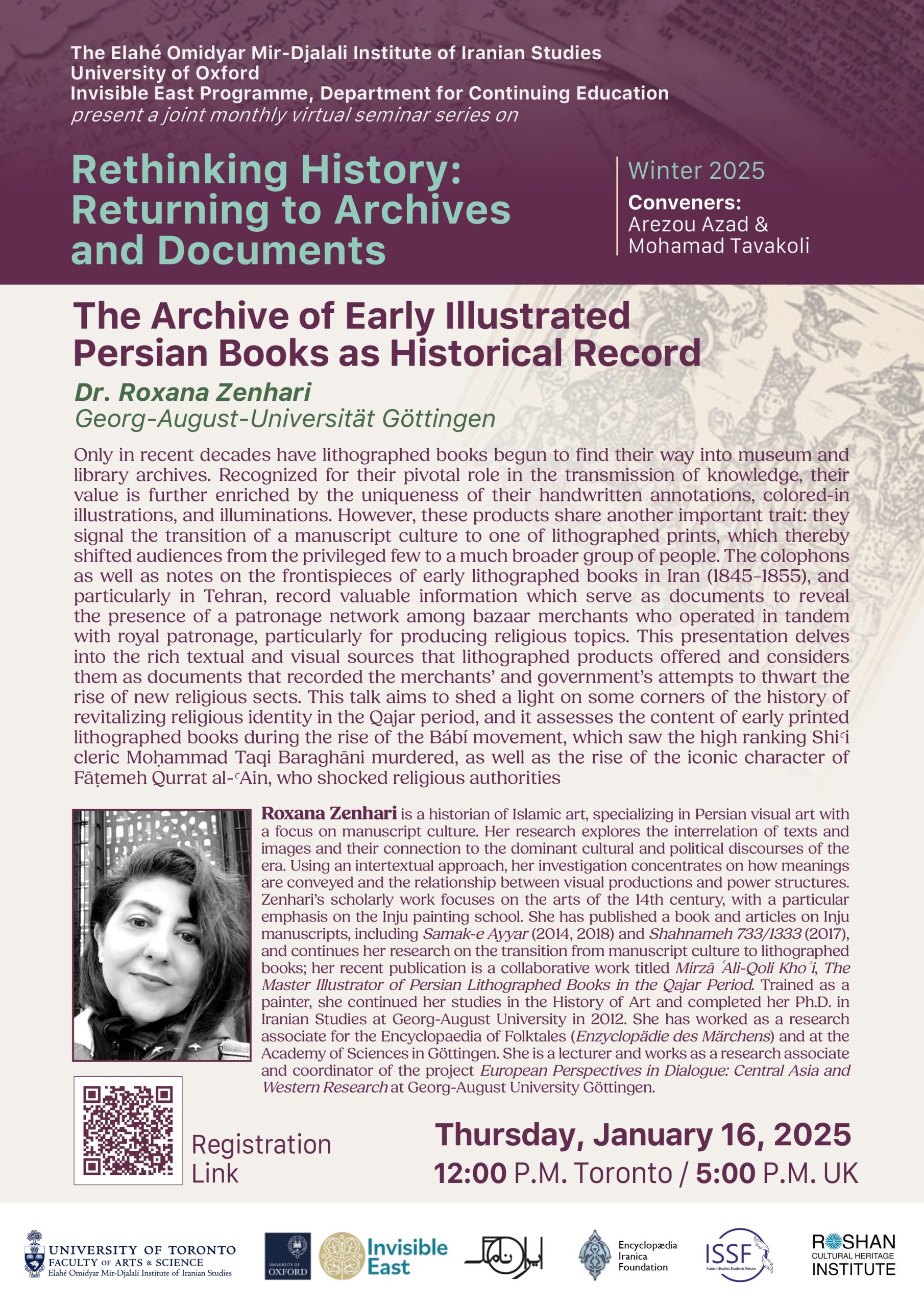Rethinking History: The Archive of Early Illustrated Persian Books
When and Where
Description
The Elahé Omidyar Mir-Djalali Institute of Iranian Studies, University of Toronto, and the Invisible East Programme, Department for Continuing Education, University of Oxford jointly present:
The Archive of Early Illustrated Persian Books as Historical Record
Roxana Zenhari, Research Associate, Georg-August-Universität Göttingen
Only in recent decades have lithographed books begun to find their way into museum and library archives. Recognized for their pivotal role in the transmission of knowledge, their value is further enriched by the uniqueness of their handwritten annotations, colored-in illustrations, and illuminations. However, these products share another important trait: they signal the transition of a manuscript culture to one of lithographed prints, which thereby shifted audiences from the privileged few to a much broader group of people. The colophons as well as notes on the frontispieces of early lithographed books in Iran (1845-1855), and particularly in Tehran, record valuable information which serve as documents to reveal the presence of a patronage network among bazaar merchants who operated in tandem with royal patronage, particularly for producing religious topics. This presentation delves into the rich textual and visual sources that lithographed products offered and considers them as documents that recorded the merchants’ and government’s attempts to thwart the rise of new religious sects. This talk aims to shed a light on some corners of the history of revitalizing religious identity in the Qajar period, and it assesses the content of early printed lithographed books during the rise of the Babi movement, which saw the high ranking Shi’i cleric Mohammad Taqi Baraghāni murdered, as well as the rise of the iconic character of Fātemeh Qurrat al-‘Ain, who shocked religious authorities.
Bio:
Roxana Zenhari is a historian of Islamic art, specializing in Persian visual art with a focus on manuscript culture. Her research explores the interrelation of texts and images and their connection to the dominant cultural and political discourses of the era. Using an intertextual approach, her investigation concentrates on how meanings are conveyed and the relationship between visual productions and power structures. Zenhari’s scholarly work focuses on the arts of the 14th century, with a particular emphasis on the Inju painting school. She has published a book and articles on Inju manuscripts, including Samak-e Ayyar (2014, 2018) and Shahnameh 733/1333 (2017), and continues her research on the transition from manuscript culture to lithographed books; her recent publication is a collaborative work titled Mirza Ali-Qoli Kho’i, The Master Illustrator of Persian Lithographed Books in the Qajar Period. Trained as a painter, she continued her studies in the History of Art and completed her Ph.D. in Iranian Studies at Georg-August University in 2012. She has worked as a research associate for the Encyclopedia of Folktales (Enzyclopädie des Märchens) and at the Academv of Sciences in Göttingen. She is a lecturer and works as a research associate and coordinator of the project European Perspectives in Dialogue: Central Asia and Western Research at Georg-August University Göttingen.



